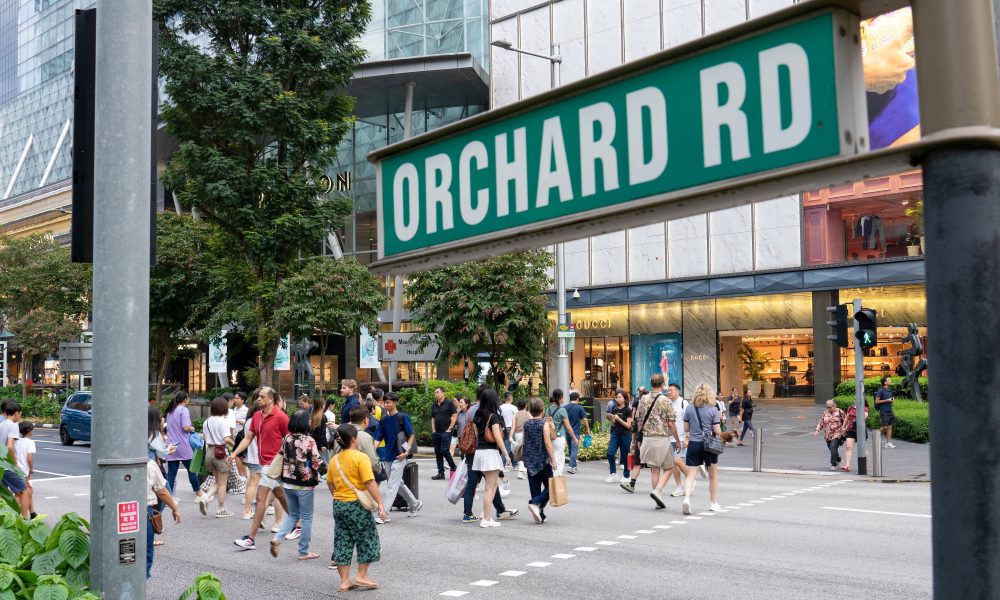From Orchards to Opulence: The History and Evolution of Singapore’s Orchard Road
3 天前
Typically when I visit Singapore, I tend to stay in either the Marina Bay or Downtown area. It’s been several years since I booked a hotel along the city’s most renowned boulevards – all but indisputably Singapore’s heart of shopping, dining, and people-watching. Beverly Hills has Rodeo Drive, London has Oxford Street, but in Singapore, it’s Orchard Road. Along with some friends, I recently took up residence in the Hilton Singapore Orchard for a few days, and spent a little time exploring this two-kilometre precinct. Amazingly, the history of this bustling thoroughfare is as varied and impressive as the gleaming malls and skyscrapers that line the road today.
PLANTATION DAYSIf you were to walk down Orchard Road two centuries ago, you would have been surrounded not by boutiques and hotels but by rows of nutmeg and fruit trees. The area, located just beyond the early colonial town limits, was dotted with plantations and pepper farms. It was a quiet, green corridor leading from the bustling harbour toward the countryside, and its name came quite literally from the orchards that lined the path.
By the 1830s, Orchard Road was home to pepper and gambier estates, as well as spice and fruit plantations owned by merchants and colonial officials. But by the mid-1800s, global nutmeg prices plummeted after disease wiped out many crops, leaving planters to sell off their lands. What followed was a gradual shift from agriculture to settlement. Grand homes began appearing, along with schools, churches, and small shops that catered to the growing population.
The late 19th century saw the road’s first taste of commerce. In 1905, Cold Storage opened its first supermarket here, serving the fledgling European expatriate community. Around the same time, mansions and colonial bungalows gave way to a more urban landscape. Though still residential at the time, Orchard Road was slowly evolving into a mixed-use area, its character changing as Singapore modernized.
POST-WAR CHANGES AND GROWTHAfter World War II, the transformation accelerated. By the 1950s and ’60s, Orchard Road had become one of Singapore’s liveliest thoroughfares, known for its cafés, cabarets, and local department stores. When Singapore gained independence in 1965, the government’s urban planners saw potential in formalizing Orchard Road as the city’s main retail and entertainment corridor. And over the subsequent years, that plan was put into action.
The 1970s brought dramatic changes. Multi-storey malls began to rise where shophouses once stood. Plaza Singapura opened in 1974, featuring the popular Japanese department store Yaohan. Lucky Plaza soon followed, introducing novelties like escalators and air conditioning, providing an early glimpse of the shopping centre culture that would define Singapore. The government also improved pedestrian walkways, covered Stamford Canal, and planted rows of Angsana trees that still provide shade today.
By the 1980s, Orchard Road had become the heartbeat of Singaporean consumer life. It was the place to see and be seen, the backdrop for weekend outings and window-shopping strolls. Department stores such as Robinsons and Tangs anchored the scene, while cinemas, bowling alleys, and nightspots drew crowds late into the evening. Orchard was no longer simply a road – it was a lifestyle.
ORCHARD ROAD COMES OF AGEAs Singapore grew into a global city, Orchard Road evolved once again. The 1990s and early 2000s saw the arrival of high-end shopping centres like Ngee Ann City and Paragon, bringing luxury brands and international designers to Singaporean shoppers. By the late 2000s, Orchard boasted more than 40 malls and nearly 800,000 square metres of retail and dining space. Walkways linked mall to mall, underground tunnels connected transport hubs, and the road became a continuous stretch of commerce and energy. (I still remember visiting once a few years ago with some friends, where we set out to see if we could spend the day exploring Orchard Road and its environs without ever seeing the sky. It’s indeed possible to fritter away many hours here without ever actually being outdoors, so impressively developed is the “Orchard Underground”!)
Newer developments, such as ION Orchard and Orchard Central, pushed design and experience to new heights. The skyline turned into an architectural showcase, blending glass and greenery in ways that reflected Singapore’s urban vision. In recent years, public agencies have introduced beautification programmes to make Orchard Road greener, cooler, and more pedestrian-friendly. Wider paths, shaded seating areas, and urban gardens have helped transform the area into more than a shopping district – it is now a curated urban experience.
Today, Orchard Road welcomes millions of visitors each year, from locals enjoying weekend lunches to tourists hunting the latest luxury trends… or just gawking at the crowds and scores of gleaming buildings. Yet amid the shiny storefronts and towering malls, echoes of its history remain, although sometimes you must admittedly look pretty closely. Among other telltale signs, the street’s early churches and temples still stand, quietly reminding visitors of its deeper roots.
STAY AND PLAYIt is fitting, then, that the Hilton Singapore Orchard stands prominently along this famous stretch. Located in the heart of Orchard, the hotel occupies a prime spot on the site of the original Mandarin Orchard. Reimagined and reopened in 2022 following a S$150 million upgrade splash, the two-tower property is now the largest Hilton in Asia-Pacific, featuring more than 1,000 rooms, five restaurants and bars, and a design that blends modern sophistication with nods to nature. (One of the towers still retains the ‘Mandarin Wing’ designation while the other is the ‘Orchard Wing,’ a nod to the hotel’s earlier days.)
The interiors draw inspiration from Singapore’s agricultural past, with botanical motifs and natural textures referencing the area’s origins as farmland. The hotel’s sustainability initiatives, from in-room filtration systems to locally sourced dining options, align with Orchard Road’s broader shift toward greener, more responsible hospitality. We were delighted to stay here as we explored the area, and found the hotel and its hospitable staff capably ticking all the boxes you’d expect from a five-star property.
From its vantage point, the Hilton Singapore Orchard offers guests an ideal base for exploring the street’s mix of old and new. A short stroll connects visitors to ION Orchard, Paragon, and Wisma Atria, while a quick MRT hop brings them to Marina Bay or Clarke Quay. The hotel’s elevated dining options, including the celebrated Estate restaurant and Osteria Mozza, mirror the cosmopolitan energy that defines modern Orchard Road. The executive lounge, meanwhile, is surely among the largest to be found anywhere in Singapore, offering curated breakfast selections in the morning, TWG teas and an array of other beverages in the afternoon (along with some seriously addictive oatmeal raisin cookies), and wines, beers, and cocktails in the evening. We definitely enjoyed the refined ambiance of the lounge whenever we could, but we were particularly eager to try Osteria Mozza, so we made sure to carve out time for this during our stay.
Though it’s by no means alone in this regard, Osteria Mozza is certainly destination dining along Orchard Road. Boasting hearty Italian dishes and impressive pizzas, the restaurant is Asia’s only outpost of the famed one-Michelin-starred Osteria Mozza in Los Angeles, helmed by Chef Nancy Silverton.
We made dinner reservations one night and settled in, enjoying the well-laid-out space on the fifth floor. Even though it was a Monday night, Osteria Mozza was still quite full, and the food that Executive Chef Peter Birks and his team were turning out from the kitchen was exemplary. We loved the Mozza Caprese and Prosciutto di Parma with Burrata Cheese at the beginning of our meal, and thought the blistered sourdough crust on the pizza was an absolute banger.
The restaurant is renowned for its pizzas, and though some of the toppings are a bit esoteric, we bet you’ll find something you enjoy from the range on offer. Possibly the highlight of this incredibly indulgent meal was the Grilled Ibérico Pork with Fennel Sambuca, which was juicy, flavourful, and cooked to perfection. Dessert aficionados won’t want to pass up Osteria’s signature Butterscotch Budino with Caramel Sauce, accentuated with crème fraiche and flakes of Maldon sea salt.
And for cocktails to end the evening, the beautiful Gingerlily bar is a fine choice, offering expertly made libations and service that was outstanding – efficient, polished, and genuinely friendly. This is a place to which we’d happily return.
AN EYE TOWARDS THE FUTUREOver the decades, what has both defined Orchard Road and cast it as truly remarkable is its ability to reinvent itself while retaining its essence. It remains a street of commerce and creativity, constantly balancing tradition with innovation. Once the domain of plantation owners and spice traders, it is now home to global fashion houses, Michelin-starred restaurants, and landmark hotels.
From nutmeg orchards to a glittering avenue of retail, Orchard Road in its own way tells the story of Singapore’s broader transformation from colonial outpost to cosmopolitan capital. It has grown, adapted, and modernized, yet continues to be an enduring symbol of the city’s drive and vision. And as travellers step out from the Hilton Singapore Orchard or any of the other numerous hotels here into the bustle beyond, of course they experience a vibrant shopping street, but perhaps unbeknownst to them, they’re also exploring a living chapter of Singapore’s history – one that continues to evolve with every passing decade.
...Read the fullstory
It's better on the More. News app
✅ It’s fast
✅ It’s easy to use
✅ It’s free









